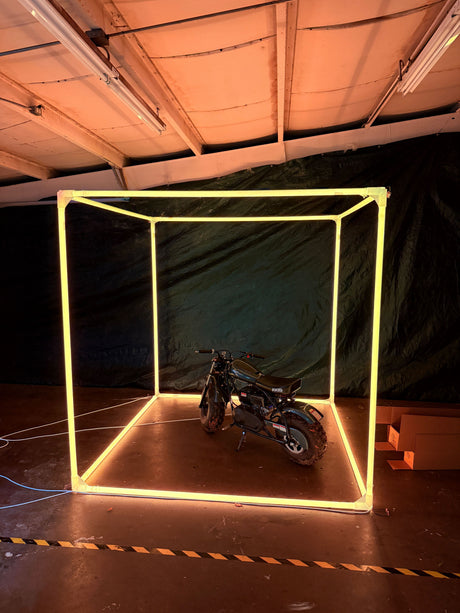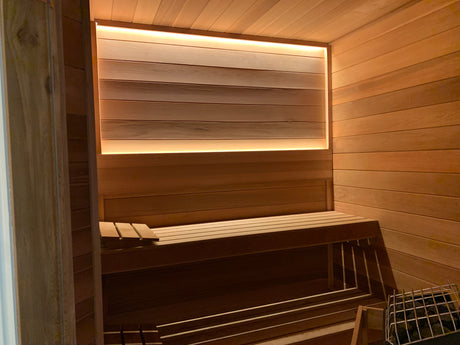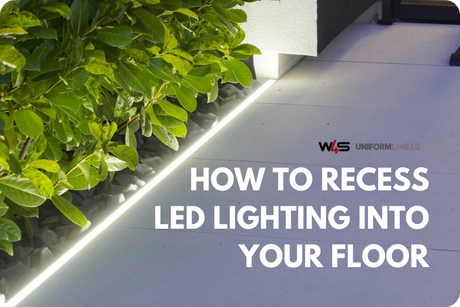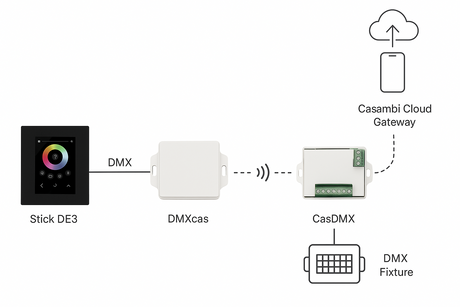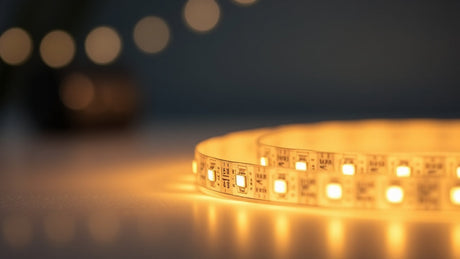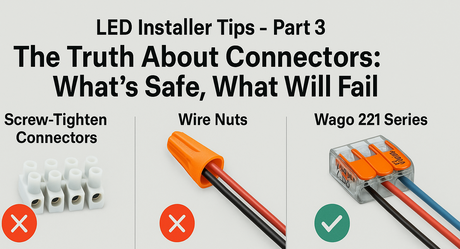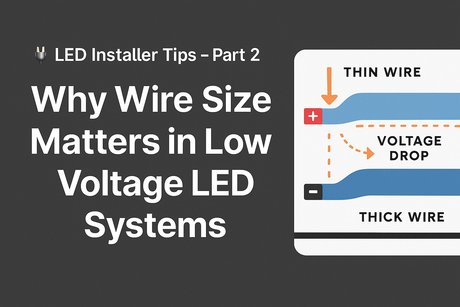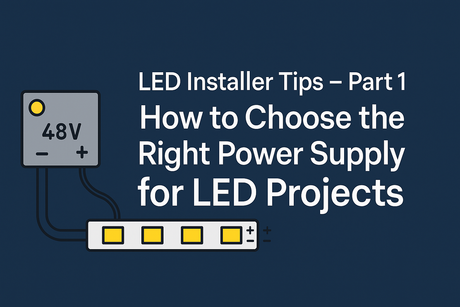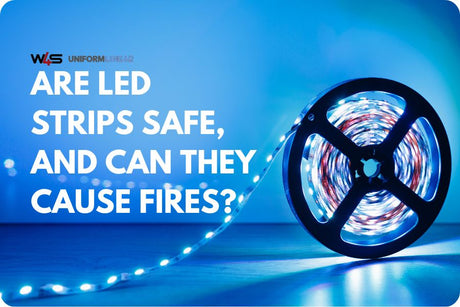Choosing the right LED power supply is crucial for ensuring the longevity and efficiency of your LED lighting system. Whether you're working with COB LEDs, LED strips, or any other type of LED lighting, understanding how to select the correct power supply is key to a successful project.
In this guide, we'll break down the factors you need to consider and provide a step-by-step approach to determining the ideal power supply for your needs.
LED power supplies are often referred to as LED drivers, transformers, and PSUs.
Understanding the Role of an LED Driver

An LED power supply converts the higher AC voltage from your power source into the lower DC voltage required by your LEDs. For example, while most homes operate on 120V AC, your LED strip lights might need 12V or 24V DC to function. Selecting the right power supply ensures that your LEDs receive a stable voltage, preventing issues like flickering, overheating, or premature failure.
Key Factors to Consider When Choosing an LED Power Supply
If you're already thinking about buying, note that there are more things to consider besides the price. Let's dig deeper into the things you should consider when choosing an LED Power Supply
Wattage Requirements
To determine the correct wattage for your LED power supply, you need to know the total led to power supply consumption. A simple formula on how to calculate power supply for led lights:

Total Wattage = Length of LED Strip (in feet) x Watts per Foot
It's recommended to add a 20% buffer to your calculated wattage to ensure that your power supply is not operating at full capacity. This helps prevent overheating and extends the lifespan of your power supply.
Example: If your LED strip is 22 feet long and consumes 3.5 watts per foot, your total wattage would be 77 watts. Adding a 20% buffer, you would need a power supply rated for at least 92.4 watts. This calculation is essential when figuring out how many led strips per power supply.
Voltage Compatibility
Ensure that the output voltage of the power supply matches the voltage required by your LED lights. Common LED strips are often available in multiple voltages, like our Carnation Series strips:
[product=single-color-led-strip-carnation-series|variants=Blue / 60LEDs/m 4.8W/m / 5m,Blue / 60LEDs/m 4.8W/m / 100m,Blue / 120LEDs/m 8.4W/m / 5m,Blue / 120LEDs/m 8.4W/m / 100m,Green / 60LEDs/m 4.8W/m / 5m,Green / 60LEDs/m 4.8W/m / 100m,Green / 120LEDs/m 8.4W/m / 5m,Green / 120LEDs/m 8.4W/m / 100m,Red / 60LEDs/m 4.8W/m / 5m,Red / 60LEDs/m 4.8W/m / 100m,Red / 120LEDs/m 8.4W/m / 5m,Red / 120LEDs/m 8.4W/m / 100m,Yellow / 60LEDs/m 4.8W/m / 5m,Yellow / 60LEDs/m 4.8W/m / 100m,Yellow / 120LEDs/m 8.4W/m / 5m,Yellow / 120LEDs/m 8.4W/m / 100m,Yellow / 120LEDs/m 8.4W/m / Per foot]
[/product]
[product=single-color-ip20-led-strip-24v-carnation-series|variants=Blue / 60LEDs/m 4.8W/m / Per foot,Blue / 60LEDs/m 4.8W/m / 5m,Blue / 60LEDs/m 4.8W/m / 100m,Blue / 120LEDs/m 9.6W/m / Per foot,Blue / 120LEDs/m 9.6W/m / 5m,Blue / 120LEDs/m 9.6W/m / 100m,Blue / 180LEDs/m 12.8W/m / Per foot,Blue / 180LEDs/m 12.8W/m / 5m,Blue / 180LEDs/m 12.8W/m / 100m,Green / 60LEDs/m 4.8W/m / Per foot,Green / 60LEDs/m 4.8W/m / 5m,Green / 60LEDs/m 4.8W/m / 100m,Green / 120LEDs/m 9.6W/m / Per foot,Green / 120LEDs/m 9.6W/m / 5m,Green / 120LEDs/m 9.6W/m / 100m,Green / 180LEDs/m 12.8W/m / Per foot,Green / 180LEDs/m 12.8W/m / 5m,Green / 180LEDs/m 12.8W/m / 100m,Red / 60LEDs/m 4.8W/m / Per foot,Red / 60LEDs/m 4.8W/m / 5m,Red / 60LEDs/m 4.8W/m / 100m,Red / 120LEDs/m 9.6W/m / Per foot,Red / 120LEDs/m 9.6W/m / 5m,Red / 120LEDs/m 9.6W/m / 100m,Red / 180LEDs/m 12.8W/m / Per foot,Red / 180LEDs/m 12.8W/m / 5m,Red / 180LEDs/m 12.8W/m / 100m,Yellow / 60LEDs/m 4.8W/m / Per foot,Yellow / 60LEDs/m 4.8W/m / 5m,Yellow / 60LEDs/m 4.8W/m / 100m,Yellow / 120LEDs/m 9.6W/m / Per foot,Yellow / 120LEDs/m 9.6W/m / 5m,Yellow / 120LEDs/m 9.6W/m / 100m,Yellow / 180LEDs/m 12.8W/m / Per foot,Yellow / 180LEDs/m 12.8W/m / 5m,Yellow / 180LEDs/m 12.8W/m / 100m]
[/product]
Additionally, make sure the input voltage of the power supply matches the voltage of your power source. For instance, if you're using a standard 120V AC home outlet, your power supply should be compatible with this input. This step is critical when understanding how to calculate power supply for LED lights.
Current Regulation
For COB LEDs and other high-power LED configurations, it's crucial to determine the correct amps power supply for COB LED lights. Most LEDs require a constant current to operate safely.
Some LEDs come with built-in current regulation, but if yours don't, you'll need a power supply that can limit the current to avoid overdriving the LEDs. This is particularly important for high-power LEDs and COB (Chip on Board) LEDs.
Dimmability
If you plan to dim your LED lights, ensure that the power supply supports dimming. There are different types of dimming options, such as PWM (Pulse Width Modulation) and TRIAC dimming. Make sure to choose the one that is compatible with your dimming system. For example, our Dimmable Class 2 Electronic LED Driver ~ Magnitude E Series is specifically for 24V.
Environmental Factors

Consider where the power supply will be installed. For outdoor or damp environments, choose a power supply with an appropriate IP (Ingress Protection). Waterproof products ensure not only your LED lights longevity but also your home's overall safety.
When you're looking for a waterproof LED strip power supply our Meanwell XLG Series is a great pick!
[product=compact-ip67-waterproof-led-driver-12v-meanwell-xlg-series]
[/product]
[product=meanwell-compact-ip67-waterproof-led-driver-xlg-series]
[/product]
Also, check the operating temperature range of the power supply. Extreme temperatures can affect the performance and lifespan of the power supply. Ensuring proper ventilation and avoiding heat buildup are essential steps when choosing the right LED power supply.
Step-by-Step Guide to Calculating the Right LED Power Supply
Determine the Total Wattage
Use the formula mentioned above to calculate LED power supply requirements. This is the first step in understanding how to calculate power supply for LED lights.
Apply the 20% Rule
Add a 20% buffer to your total wattage to ensure the power supply can handle the load without overheating.
Check the Voltage
Verify that the power supply's output voltage matches the voltage required by your LED lights. This is a crucial aspect of how to calculate LED power supply needs accurately.
Consider Future Expansion
If you plan to add more LED strips or lights in the future, choose a power supply with a higher wattage capacity to accommodate the additional load. This consideration helps you understand how many LED strips per power supply can be safely supported.
Use an LED Power Supply Calculator
To simplify the process, you can use an LED power supply calculator. This tool can help you quickly determine the right power supply based on your specific LED setup.
Common Questions About LED Power Supplies
I know that despite the in-depth article giving you tons of information about LED power supplies, there will be more questions in your mind every time you learn something. Here are some additional FAQs that might help you in having a better understanding with the topic at hand:
How many LED strips can be powered by a single power supply?
This depends on the total wattage of your strips and the capacity of the power supply. Always calculate the total wattage and ensure your power supply can handle the load with a 20% buffer.
How to calculate the power supply for COB LED lights?
Similar to LED strips, determine the total wattage needed for your COB LEDs and select a power supply with at least 20% more capacity than required. Be sure to determine the correct amps power supply for COB LED lights to ensure safe operation.
What happens if I choose a power supply with a higher wattage than needed?
It's generally safe to use a power supply with a higher wattage. The LEDs will only draw the amount of power they need, and the excess capacity will help the power supply run cooler and more efficiently.
Conclusion
Choosing the right LED power supply is not just about matching the voltage and wattage; it's about ensuring the safety and longevity of your LED lighting system. By following the steps outlined in this guide, and of course, asking the right professionals, you can confidently select a power supply that meets your needs and supports the efficient operation of your LEDs.
For quality LED channels, LED strips, and power supplies check out our online store!







